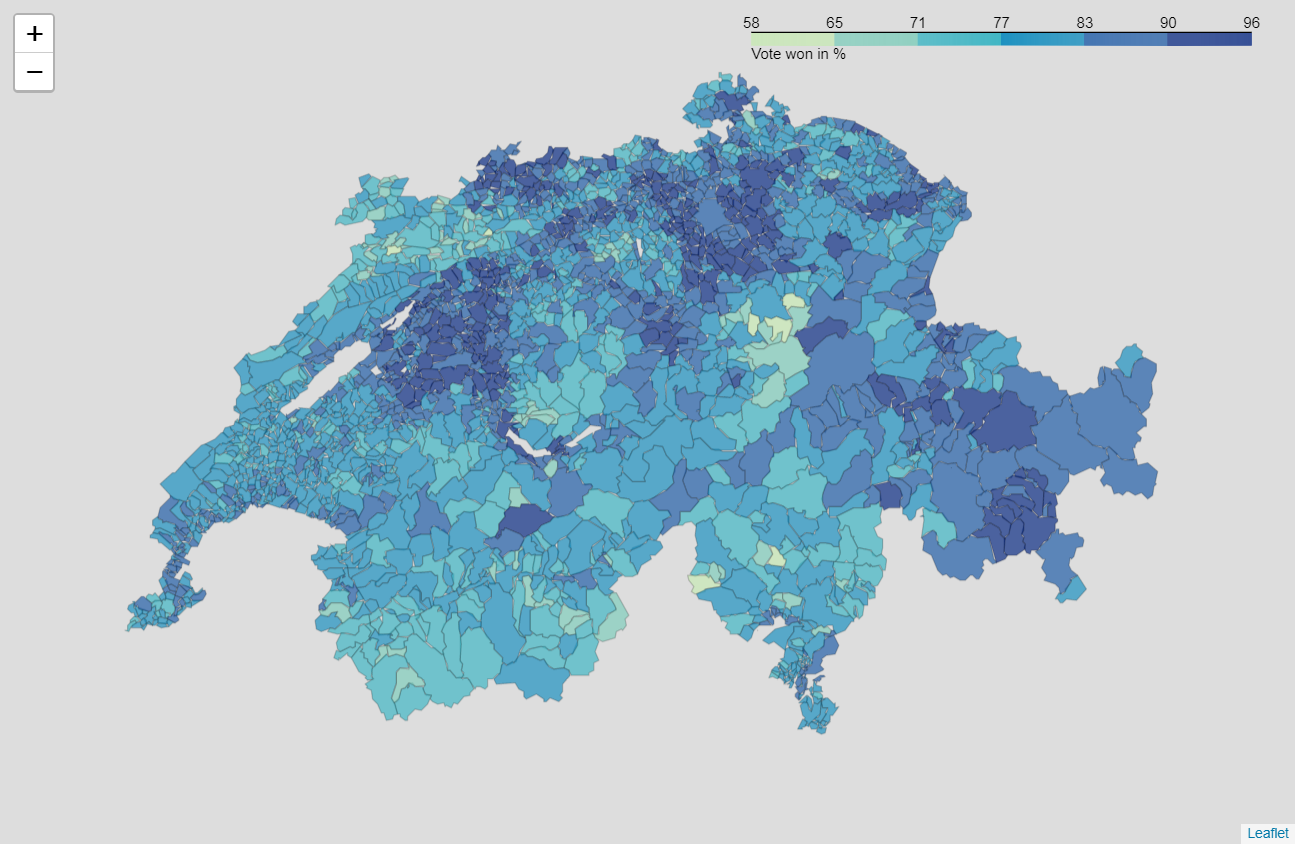Röstigraben Applied data analysis of swiss votation patterns
Winner and loser
In this post we will determine if some commune win more more votation than other and if yes which one is losing the most election and which
one is winning the most. For that we take a look at the percentage of votation won by commune and we put it in a map, and next we will observe and analyze the 5 best and the 5 worst.
 See the full html here
See the full html here
On this map we first observe that the minimum of the win rate is 58% this mean that there is no commune that lose too much election that its voice is not heard. But we can also see that some place are But we can also see some place where there is more defeat, like the Jura, Schwyz and the south west of the Valais and we can see that there is some on the other side that are often right like the commune next to Bern and Friburg, the canton of Zurich and the South of the Grisons.
We can observe from that map that the place that tends to often win are place that are big towns or close to them and that the place that tends to lose are place that are in the campaign (even if some place break this trend like the grisons that are often right or Geneva and Lausanne that are not that right for big city). Most winning voters :
| Commune | mean number of registered electors | mean Participation in % | win rate | |
|---|---|---|---|---|
| 1340 | Neuenegg | 3310.416667 | 42.147436 | 95.032051 |
| 2000 | Urtenen-Schönbühl | 3624.288462 | 37.066987 | 95.032051 |
| 1051 | Langenthal | 9711.253205 | 43.849359 | 95.192308 |
| 157 | Belp | 6896.907051 | 43.318590 | 95.192308 |
| 549 | Ebikon | 7233.666667 | 44.025000 | 95.352564 |
least winning voters :
| Commune | mean number of registered electors | mean Participation in % | win rate | |
|---|---|---|---|---|
| 1983 | Unteriberg | 1456.714744 | 42.691987 | 58.814103 |
| 558 | Ederswiler | 98.314103 | 31.031410 | 61.858974 |
| 39 | Alpthal | 329.125000 | 42.285897 | 62.660256 |
| 1729 | Schelten | 44.298077 | 36.379167 | 62.980769 |
| 350 | Campo (Vallemaggia) | 53.878205 | 39.886538 | 63.301282 |
We see on those 2 tables that the language spoken at those place are not very important as they sound mostly German but we can see that the the commune that tends to lose often have very few people (some have less than 100 voters) and on the other side the winners are have a somewhat big population, but are not the most populated.
Conclusion
From what we see here, the Röstigraben is here not present but at its place we can see a divide between the cities and the countryside, this not of course a proof of the end of this divide but we begin to see an other division in Switzerland.